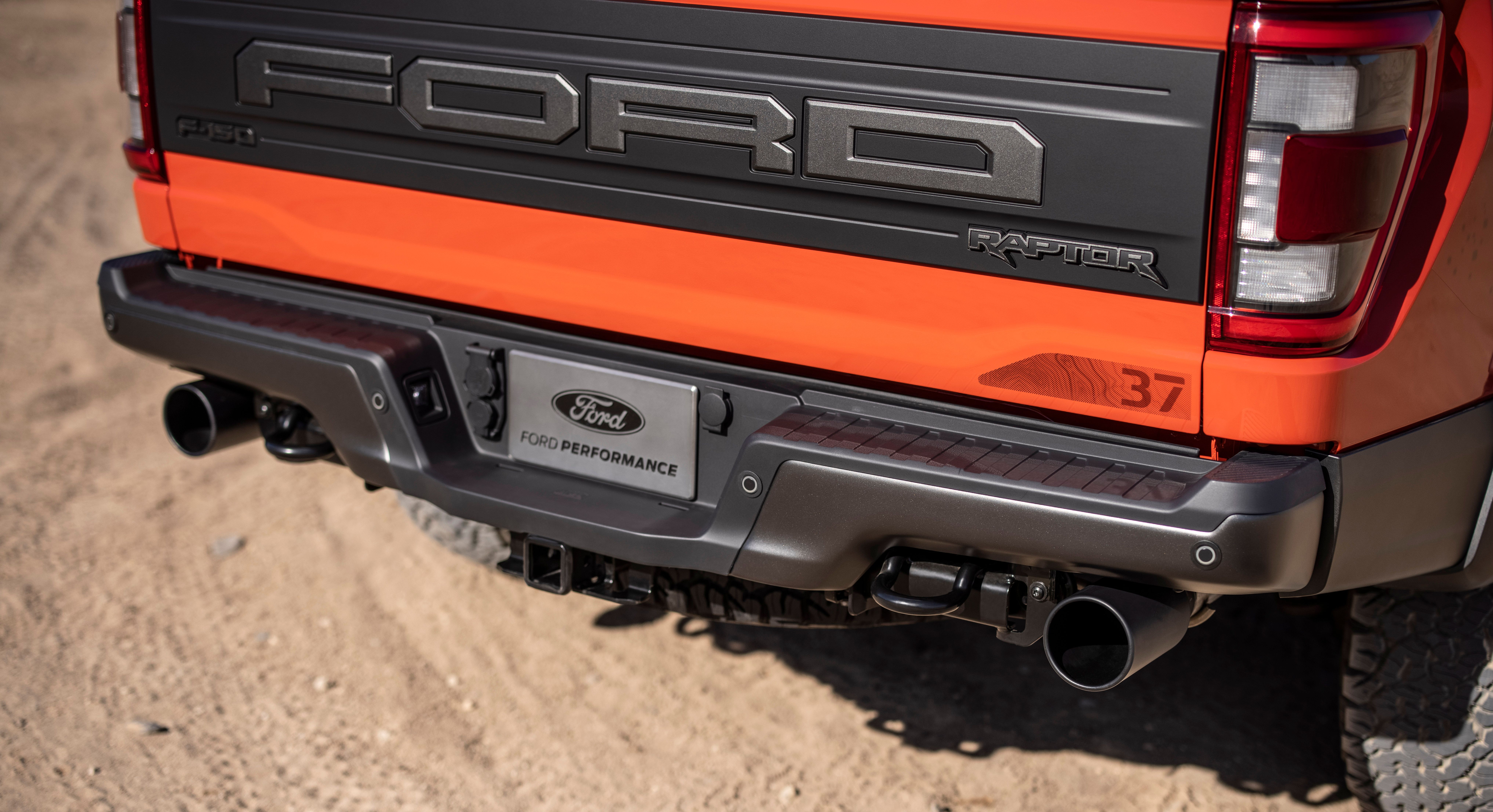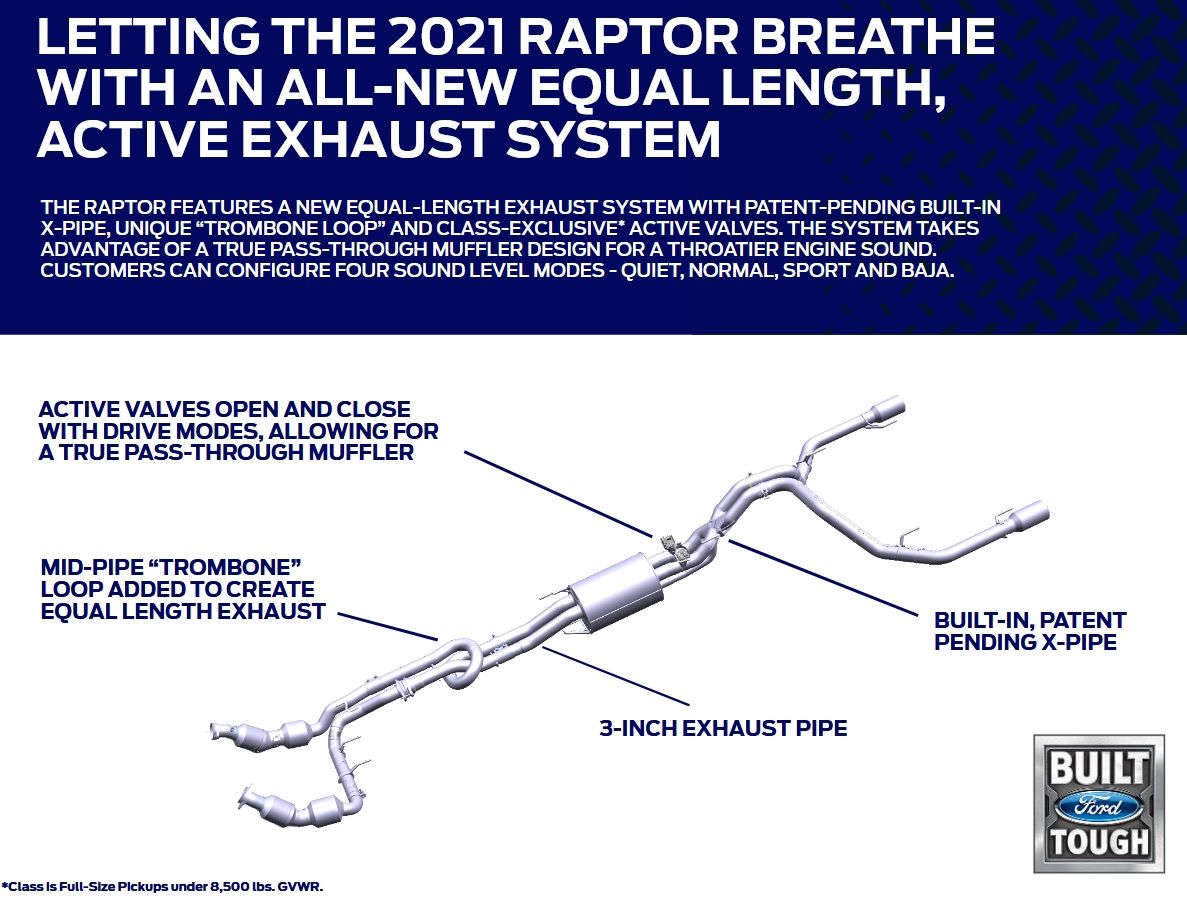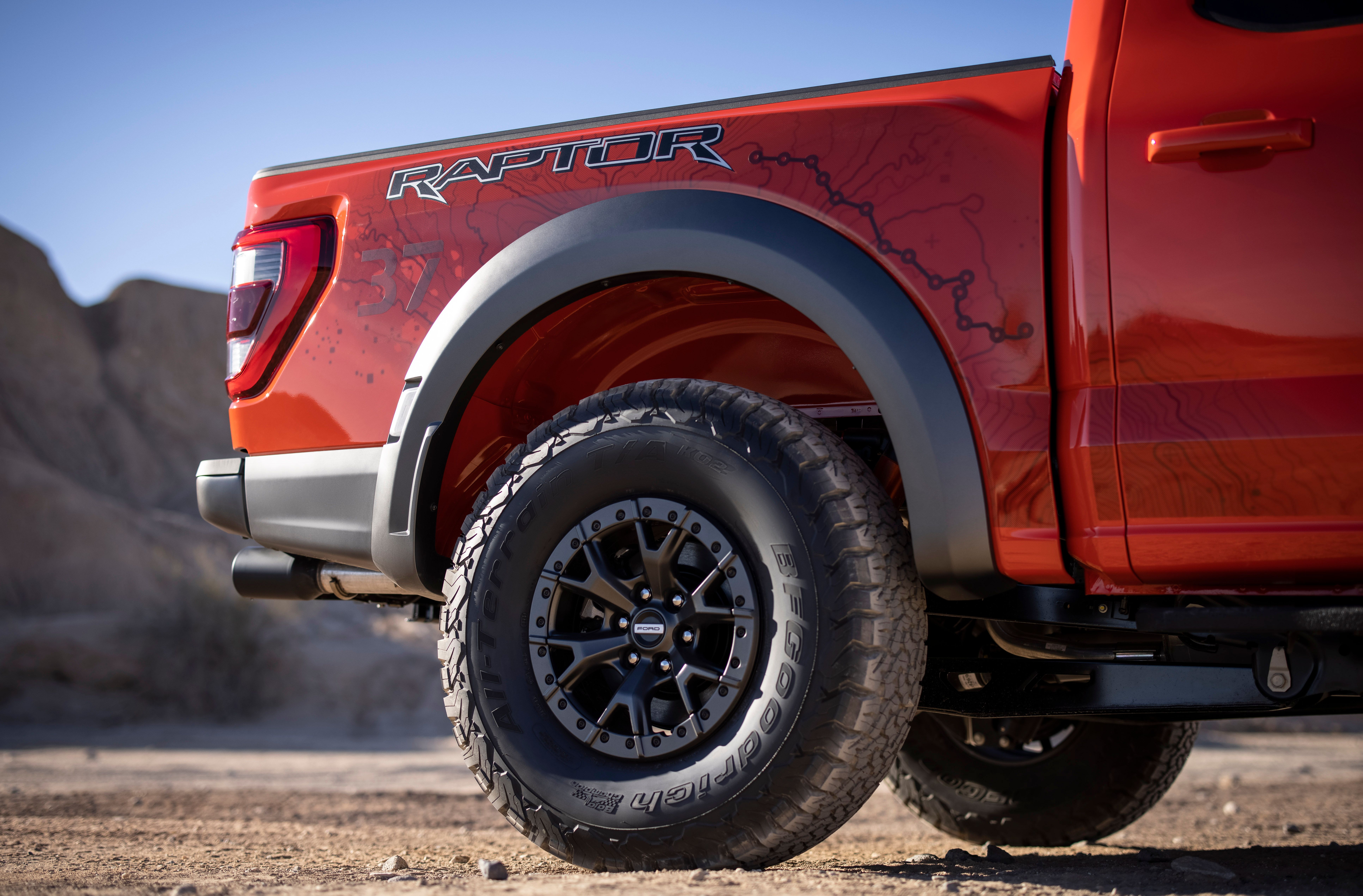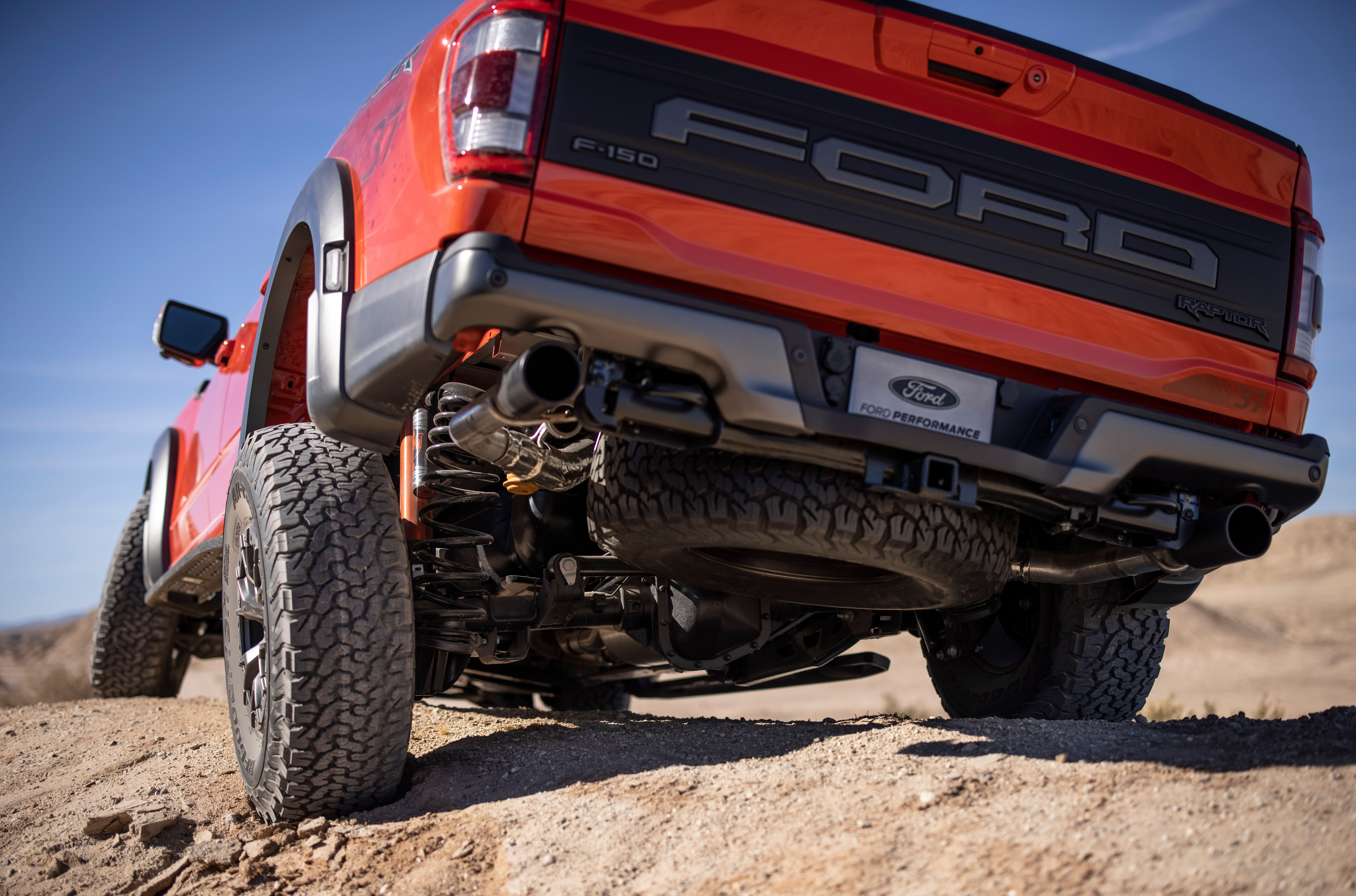The third-gen F-150 Raptor debuted a few days back and it came with quite a few features that make it an exciting off-road truck. Apart from the 37-inch tires, the truck’s exhaust system has garnered a lot of attention. You would naturally assume that Ford is trying to keep up with the competition and perhaps tore a page out of the Ram TRX’s book, but the inspiration for the exhaust note comes from two completely unrelated products that the Raptor has nothing in common with – The Nissan GT-R and the Alfa Romeo Giulia QV.
The first-gen F-150 Raptor came with an option of two big V-8s, including a 6.2-liter engine that could make you go weak in the knees if you heard it rev hard. But, Ford dropped the V-8s for the second-gen and introduced the EcoBoost V-6. The engine didn’t disappoint in terms of performance and came with a big share of pros, but it sounded nothing like its brawny predecessor.
To offer the best of both worlds in the third-gen F-150 Raptor, the automaker decided to offer the same engine, but with the grunt that would make enthusiasts and purists happy. For this, Ford plonked in a new exhaust system altogether. Speaking to Road & Track, Ford’s powertrain system engineer, Jeff Nichols, explained that the reason behind the new exhaust design is to make it sound better and more appealing to customers who really want a V-8.
If you make a list of vehicles that sound great, barely any feature anything less than eight cylinders. But, that doesn’t mean there are no six-pot mills that don’t sound good. Ford went for an out-of-the-box idea and took inspiration from the Nissan GT-R and the Alfa Romeo Giulia QV. Nichols said, "We went and looked at some traditional equal-length systems and some exhaust characters we felt were very good within the industry. We looked at the Alfa Romeo Quadrifoglio series of vehicles, and we did some benchmarking on the Nissan GT-R as well."
It Didn’t End With Just Drawing Inspiration
However, the truck being an off-roader presented further problems. The suspension and the travel range took up most of the space and the 37-inch tires posed a whole new different problem altogether . On top of this, trucks generally have their exhaust routed to one side due to the space limitations presented by the frame and driveshaft. This means that one side of the exhaust is inherently longer because one side must crossover to the other side just behind the engine which ultimately makes for the unequal pulse you hear from the truck's exhaust.
This, however, isn’t a problem in the F-150 Raptor because Ford utilized a Trombone loop with active valves on the passenger side exhaust pipe to help even up the overall length of both exhaust pipes. Furthermore, the exhaust mufflers are located more to the center of the truck as to not compromise the departure angle.
All said and done, Ford finally accomplished to get a good sounding V-6 that will – to some extent – make up for a lacking V-8. If you don’t want to settle for just the sound and want an actually V-8, you’ll have to wait until 2022 when Ford will roll out the F-150 Raptor R, the true blue competitor to the Ram 1500 TRX!






